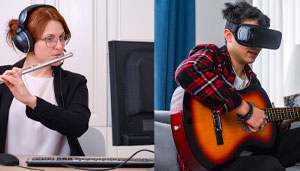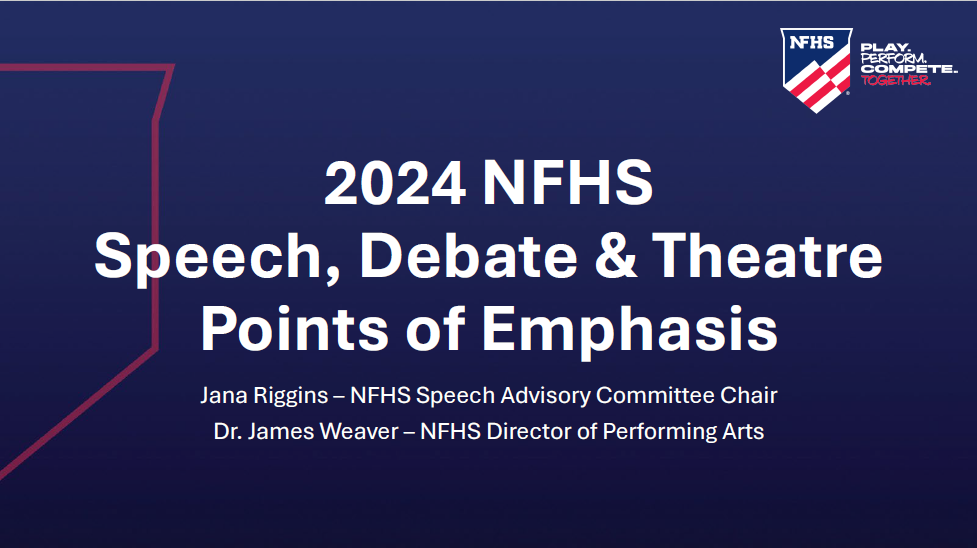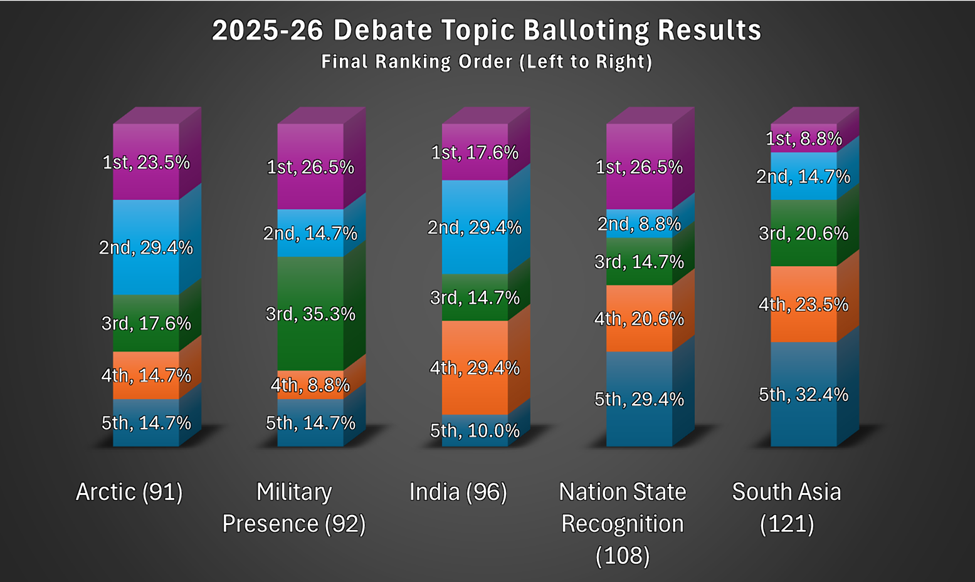Wireless microphones are used to transmit sound to an amplifier or recording device without need of a physical cable. Their use provides many important functions that serve the public interest. For instance, they play an essential role in enabling broadcasters and other video programming networks to serve consumers, including helping electronic news gathering (ENG) activities at locations in the field and the broadcasting of live sports events. Wireless microphone users include theaters and music venues, film studios, conventions, corporate events, houses of worship, major sports leagues, and schools. Wireless microphones can include hand-held or body-worn wireless microphones, in-ear monitors, devices used for cueing on-air talent, and intercom systems for backstage communications.
There are a wide number of wireless microphones available, serving different needs. Some meet high technical standards to achieve the performance purposes for which they are used, while others do not require such high-end technical capabilities for their particular purposes. Wireless microphones may operate in various spectrum bands. The technical rules under which wireless microphones operate will differ depending on the spectrum band in which they operate. Wireless microphones may be designed to operate on discrete frequencies within a spectrum band, or they may operate over a range of frequencies in band.
The FCC allows the use of wireless microphones on a licensed and unlicensed basis, depending on the spectrum band, technical characteristics, and user eligibility. Most wireless microphones that operate today use spectrum in the TV bands - that is, the VHF and UHF bands allocated for television broadcasting - which has included TV channels 2-51, (except channel 37). Wireless microphones also may operate on other spectrum bands as well.
Changes beginning in 2017 concerning operation on 600 MHz frequencies. Beginning in 2017, the amount of TV band spectrum available for wireless microphone use is decreasing as a result of the incentive auction, which was completed on April 13, 2017. A significant portion of the TV band spectrum in the 600 MHz band, including most (but not all) of the spectrum on TV channels 38-51 (614-698 MHz), has been repurposed for the new 600 MHz service band for use by wireless services, and will not continue to be available for wireless microphone use. Specifically, wireless microphones that operate in the new 600 MHz service band (the 617-652 MHz and 663-698 MHz frequencies) will be required to cease operation no later than July 13, 2020, and may be required to cease operation sooner if they could cause interference to new wireless licensees that commence operations on their licensed spectrum in the 600 MHz service band. FCC 14-50, FCC 15-140, DA 17-314 Spectrum will continue to be available for wireless microphone use on the other TV channels 2-36 (TV band frequencies that fall below 608 MHz), on portions of the 600 MHz guard band (the 614-616 MHz frequencies) and the 600 MHz duplex gap (the 653-663 MHz frequencies), and in various other spectrum bands outside of the TV bands. FCC 15-100, FCC 15-99
Bands outside of TV bands that are available for wireless microphone use. In 2015, the Commission provided for new opportunities for licensed wireless microphone operations in spectrum outside of the TV broadcast band, including in the 169-172 MHz band and portions of the 900 MHz band, the 1435-1525 MHz, and the 6875-7125 MHz bands. Unlicensed wireless microphone operations are permitted in several bands outside of the TV bands, including the 902-928 MHz band, the 1920-1930 MHz band, and portions of the 2.4 GHz and 5 GHz bands. FCC 15-100
Types of Wireless Microphone Operations Authorized by the FCC – Licensed and Unlicensed
Licensed Wireless Microphones.
Certain eligible wireless microphone users and users of other similar equipment (such as for cue and control communications and synchronization of TV camera signals) may obtain low power auxiliary station (LPAS) licenses under Part 74, Subpart H, of the FCC’s rules, to operate on TV band spectrum on a secondary basis subject to certain prohibitions and other requirements contained in the rules. Part 74, Subpart H The FCC’s rules generally permit licensed wireless microphones operations on unused television channels in the TV bands, but they must share this spectrum with other users and have secondary status - they must protect the primary TV broadcast operations, as well as other primary and secondary operations, from harmful interference and must accept interference from these other users when operating. FCC 15-100
Wireless microphone users that are eligible for a Part 74 license historically have included broadcasters and motion picture and television program production entities. In 2014, the FCC provided for a limited expansion of eligibility for wireless microphone licenses by adding two new categories of eligible entities: “large venue owner or operators” and “professional sound companies.” To be eligible for a license under these new categories, a large venue owner or operator and a professional sound company must routinely use 50 or more LPAS devices, where the use of such devices is an integral part of major events or productions. “Routinely using” 50 or more LPAS devices means that the venue owner or operator uses 50 or more such devices for most events or productions. FCC 14-62
Wireless microphone users may also operate on a licensed basis under Part 74 in other spectrum bands, including specified portions of the 900 MHz band, the 1435-1525 MHz band, and the 6875-7125 MHz band, where eligibility is limited generally to broadcasters, broadcast network entities, and large venue owners/operators or professional sound companies that routinely operate 50 or more wireless microphones for major events/productions. Part 74, Subpart H Licensed wireless microphone users may also operate on specified frequencies in the 169-172 MHz Band, which is available to a variety of entities. FCC 15-100
Unlicensed Wireless Microphones.
Many (if not most) wireless microphone users today operate on an unlicensed basis in the TV band spectrum. The unlicensed use of wireless microphones in TV band spectrum is subject to certain restrictions - including low power levels than licensed operations, they may not cause harmful interference, and they must accept any interference from other users that operate in the band. In 2015, the Commission established the rules for the operation of unlicensed wireless microphones in the TV band spectrum in a Report and Order. FCC 15-99 Also, wireless microphones have been developed that operate on other frequency bands on an unlicensed basis under the FCC’s Part 15 rules. These frequency bands include the 902-928 MHz band, the 1920-1930 MHz band, and the 2.4 GHz band. FCC 15-100
Wireless Microphone Operations and Prohibitions
Transition of Wireless Microphones out of the 600 MHz Band.
In the May 2014 Incentive Auction Report and Order, the FCC adopted rules to implement the broadcast television spectrum incentive auction, which will involve reorganizing the existing television band and repurposing a portion of the UHF television band for new wireless broadband services following the close of the incentive auction.
FCC 14-50 As a result of this auction, which closed on April 13, 2017, spectrum on most 600 MHz frequencies – specifically the 617-652 MHz and 663-698 MHz frequencies – has been repurposed for the 600 MHz service for wireless licensees. DA 17-314 The spectrum that is used by these 600 MHz service licensees will no longer be available to wireless microphones in the coming years, as discussed below. All wireless microphone operations in the 600 MHz service band must cease no later than 39 months after the close of the incentive auction. FCC 14-50 – which is July 13, 2020. DA 17-314. And, wireless microphone operations must cease earlier if such operations could cause harmful interference to any 600 MHz service licensee’s operations. In particular, wireless microphone users must cease operation in frequencies in any areas where a 600 MHz service licensee has commenced their operation or is conducting its first field application testing. FCC 15-140
The FCC has provided for a transition period of up to 39 months to help smooth the transition as wireless microphone operators obtain new equipment and transition out of the repurposed 600 MHz service band (617-652 MHz / 663-698 MHz) to other spectrum. During the transition period, which ends on July 13, 2020, these operators may continue to access the spectrum that has been repurposed to 600 MHz service licensees under certain conditions. Specifically, wireless microphone users may operate on the 600 MHz service spectrum – the 617-652 MHz and 663-698 MHz frequencies – only if they do not cause harmful interference either to the existing broadcast television operations (which also must cease operating in the band no later than January 13, 2020) or to the 600 MHz service wireless licensees’ operations in the band. Wireless microphone users also must accept harmful interference from those broadcast television and 600 MHz service licensees. FCC 14-50, FCC 15-100, FCC 15-99, FCC 15-140
Wireless microphone users, whether licensed or unlicensed, may continue to operate on a secondary basis in the bands that continue to be available for and used on a primary basis by broadcast television (TV channels 2-36). Use of these TV band frequencies, which fall below 608 MHz, remain available for wireless microphone use after the incentive auction. FCC 15-100, FCC 15-99 Licensed wireless microphones may also operate on the specific frequencies in the 600 MHz duplex gap (652-657 MHz), and unlicensed wireless microphones may operate on a portion of the 600 MHz guard band (614-616 MHz) or a portion of the 600 MHz duplex gap (657-663 MHz). FCC 15-100, FCC 15-99, DA 17-314
As discussed above, licensed wireless microphone users also may operate in other spectrum bands, including portions of the 169-172 MHz band, the 900 MHz band, the 1435-1525 MHz band, and the 7 GHz band. Part 74, Subpart H Wireless microphones may also operate on an unlicensed basis in several other bands, including the 902-928 MHz band, the 1920-1930 MHz band, and the 2.4 GHz band. FCC 15-100
Wireless Microphone Sales
Going forward, anyone selling a wireless microphone or other device designed to operate in the restricted 600 MHz wireless service band (617-652 MHz / 663-698 MHz) will be required to notify buyers at the point of sale that the device may no longer be used after July 13, 2020, and that users may be required to cease operation earlier if using the device could cause harmful interference that disrupts wireless communications for new service licensees. DA 17-709
The manufacture, import, sale, lease, offer for sale or lease, or shipment of wireless microphones or similar devices intended for use in the United States that operate on the 600 MHz service band frequencies (617-652 MHz and 663-698 MHz) is prohibited after October 13, 2018 ( See FCC 15-100, FCC 15-99, DA 17-314, FCC 17-95).
Transition of Wireless Microphones out of the 700 MHz Band.
In 2010, the FCC prohibited the operation of wireless microphones and similar devices (e.g., wireless intercoms, wireless in-ear monitors, wireless audio instrument links, and wireless cueing equipment) in the 700 MHz Band (i.e., 698 - 806 MHz). This 700 MHz band formerly had been allocated for TV broadcast services, and has been repurposed for wireless broadband and public safety services. The manufacture, import, sale, lease, offer for sale or lease, or shipment of wireless microphones or similar devices intended for use in the United States in the 700 MHz Band was banned by the FCC in January 2010, and use of the devices in the 700 MHz Band also was prohibited as of June 12, 2010. Refer to the materials available in the link below for further information on these prohibitions. Wireless Microphones Prohibited 700MHz Band
Registration of Wireless Microphones Operations
The FCC’s rules provide for interference protection for licensed wireless microphone operations from unlicensed white space devices in the TV bands spectrum by permitting wireless microphone licensees to register their operations in a white spaces database (administered by third parties). Specifically, under the current rules, licensed wireless microphone users and licensed users of other LPAS equipment may register their operating locations, channels and times in the white spaces database, and receive interference protection from unlicensed white space device operations.
Background
Wireless Microphones Order on Reconsideration
______________
Closing and Channel Reassignment Public Notice
______________
Wireless Microphones Report and Order
______________
TV Bands Part 15 R&O
______________
TV Bands Wireless Microphones Second Report and Order
______________
FCC 14-50 – Incentive Auction Report and Order
FCC Adopts Rules for First Ever Incentive Auction
______________
DA 10-92
Consumer Disclosure Requirement Pertaining to Low Power Auxiliary Stations that Operate in the 698-806 MHz Band
______________
FCC 10-16
Revisions to Rules Authorizing the Operation of Low Power Auxiliary Stations in the 698-806MHz Band
Erratum - Acrobat
Report and Order and Further NPRM - Acrobat - Word
Statement of Chairman Genachowski - Acrobat - Word







